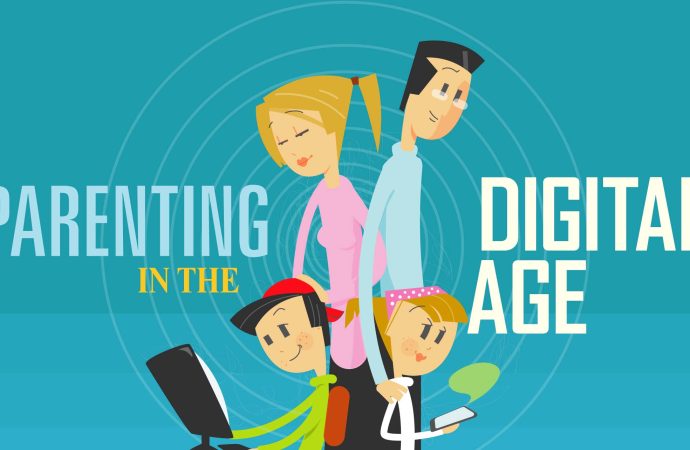Introduction In today’s screen-filled world, parenting comes with new challenges and responsibilities. As digital devices become central to learning, entertainment, and socializing, families must navigate the fine line between harnessing technology’s benefits and preventing its pitfalls. Never before have parents faced such complex challenges in managing technology’s role in their children’s lives. Smartphones, tablets, social
Introduction
In today’s screen-filled world, parenting comes with new challenges and responsibilities. As digital devices become central to learning, entertainment, and socializing, families must navigate the fine line between harnessing technology’s benefits and preventing its pitfalls.
Never before have parents faced such complex challenges in managing technology’s role in their children’s lives. Smartphones, tablets, social media, and AI tools are now deeply embedded in education, entertainment, and social development. While technology offers incredible learning opportunities, it also brings concerns about screen addiction, cyber safety, and mental health.
This guide explores practical strategies for screen time management, fostering digital literacy, collaborating with schools, and accessing expert-led workshops on kids and tech—helping you raise children who thrive both online and offline.
Section 1: Screen Time Management: Finding the Right Balance
Why It Matters
Excessive screen time has been linked to:
- Sleep disturbances
- Reduced physical activity
- Attention difficulties
- Social skill delays
Yet, not all screen time is equal—educational apps, creative tools, and video calls with family can be beneficial.
Practical Strategies
Set Age-Appropriate Limits
- Under 2 years: Avoid screens (except video calls)
- 2-5 years: ≤1 hour/day of high-quality programming
- 6+ years: Consistent limits based on family values
Create Tech-Free Zones & Times
- No devices during meals, family time, or 1 hour before bed
- Keep screens out of bedrooms to improve sleep
Prioritize Quality Content
- Choose interactive, educational apps over passive scrolling
- Use tools like Common Sense Media to find age-appropriate content
Model Healthy Habits
- Kids mimic parents—reduce your own mindless scrolling
Section 2: Digital Literacy Teaching Safe & Smart Tech Use
Beyond limiting screen time, children need skills to navigate the digital world responsibly.
Key Lessons for Kids
Online Safety Basics
- Strong passwords, privacy settings, and recognizing scams
- Never share personal info with strangers
Critical Thinking About Content
- Spotting fake news and AI-generated misinformation
- Understanding digital footprints
Positive Online Behavior
- Cyberbullying prevention and respectful communication
- Balancing social media with real-world connections
How Parents Can Help
- Have open, ongoing conversations (not one-time lectures)
- Use real-world examples to discuss risks and ethics
- Explore resources like Digital Bridge for family-friendly guides
Section 3: Schools & Tech: Partnering for Healthy Habits
Schools play a crucial role in shaping kids’ tech use. Many now provide technology use guidance for schools, including:
- Structured device policies (e.g., “no phones during class”)
- Digital citizenship programs teaching online responsibility
- Parent workshops on managing tech at home
What Parents Should Ask Schools
- How are devices used in classrooms?
- What digital literacy programs are in place?
- Are there resources for parents to reinforce these lessons?
Section 4: Workshops & Support Learning From Experts
Many parents feel overwhelmed—but help is available. Workshops on kids and tech cover:
- Screen Time Solutions: Setting realistic rules
- Online Safety: Protecting kids from predators & scams
- Mental Health & Tech: Recognizing anxiety or addiction signs
- Parent-Child Contracts: Agreeing on fair tech use
Organizations like Digital Bridge offer:
- Free webinars
- School partnership programs
- 1-on-1 coaching for tough cases
Balance Learning and Leisure Screen Time
Not all screen time is equal. Homework, coding practice, or creative video editing serves growth; passive scrolling or binge-watching tends to drain energy. Help kids distinguish:
- Productive use: Learning, creating, problem solving
- Mindless use: Endless feeds, negative browsing
Set windows for both, and teach them to check in: “Is this helping me feel or grow, or am I stuck in a loop?” Developing that filter is a key digital parenting tip for long-term balance.
Keep Communication Open
Technology changes fast. What was a rule last year might feel irrelevant now. Keep family conversations regular:
- Review what’s working and what’s not
- Ask children about their online friends and interests
- Share your concerns without shaming
- Celebrate responsible, balanced choices
When kids feel heard, they’re more likely to come forward before problems grow—and to cooperate in finding solutions.
Adjust for Individual Needs
Each child is different. Some are naturally self-controlled; others get absorbed quickly. Some need more structure; others thrive with gentle limits. Parenting in the digital age requires tuning general advice to your child’s temperament and challenges. Watch for:
- Sleep troubles linked to late screen use
- Mood changes after certain online activities
- Difficulty switching away from games or apps
Respond with empathy, not punishment. Explore why the pull is strong and offer alternative support or gradual changes.
Plan for Transitions and Independence
As kids mature, the goal shifts from parental control to self-management. Gradually give them more responsibility:
- Let them lead rule updates based on reflection
- Teach them to set their own screen limits
- Coach on digital reputation and long-term consequences
- Encourage digital detox days or weekend breaks
Preparation now builds the adult habits they’ll carry into college, work, and relationships.
Conclusion: A Balanced Approach for the Digital Future
Technology isn’t going away—but with the right strategies, parents can ensure it enhances rather than harms childhood. By:
- Setting clear but flexible screen limits
- Teaching digital literacy from an early age
- Collaborating with schools and experts
- Staying engaged in kids’ online worlds
…you’ll raise resilient, tech-savvy kids ready for the future.
Need Personalized Help? Explore our recommended workshops on kids and tech or download our free Family Digital Wellness Plan to get started today!
















